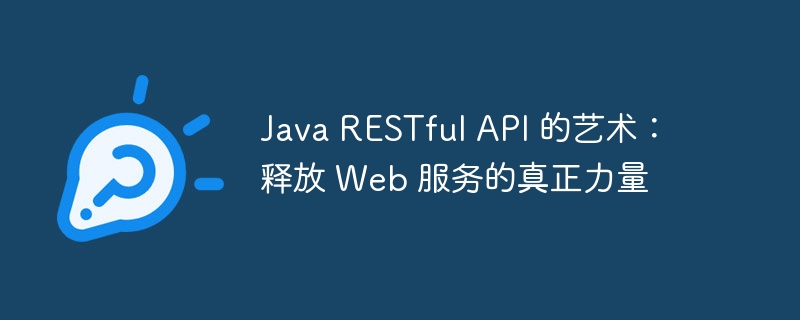

php Xiaobian Yuzai takes you to explore the mysteries of Java RESTful API! This article will reveal how to unleash the true power of Web services and let you understand how to use RESTful APIs to design flexible and efficient Web services. Whether you are a beginner or an experienced developer, you can benefit from it, master the art of designing and implementing RESTful APIs, and improve the quality and performance of web services. Let's delve into the essence of Java RESTful API and unleash its unlimited potential!
RESTful api Follows six core principles:
Planning resources
The core of RESTful API is resources. Resources are entities of interest to your application, such as users, products, or orders. When planning resources, consider the following factors:
Management Status
RESTful APIs should be stateless, meaning the server should not store any client session state. However, sometimes it is necessary to maintain state between requests. The following techniques can be used:
Handling errors
Error handling is crucial for RESTful APIs. Use standard HTTP status codes to clearly communicate error information. Additionally, custom error message bodies can be created to provide more detailed information to help client applications understand and handle errors.
version control
Over time, RESTful APIs may need updates and changes. The versioning mechanism allows incremental changes to the API without breaking existing clients. There are several version control techniques available, such as:
safety
Thesecurity of a RESTful API is crucial. Implement the following measures to protect the API from unauthorized access and attacks:
Best Practices
Follow best practices to create efficient and robust RESTful APIs:
Mastering the art of RESTful API design is critical to developing powerful services that meet the needs of modern web applications. By following these principles, best practices, and security measures, you can create flexible, scalable, and robust APIs that provide a strong foundation for your applications.
The above is the detailed content of The Art of Java RESTful APIs: Unleashing the True Power of Web Services. For more information, please follow other related articles on the PHP Chinese website!




